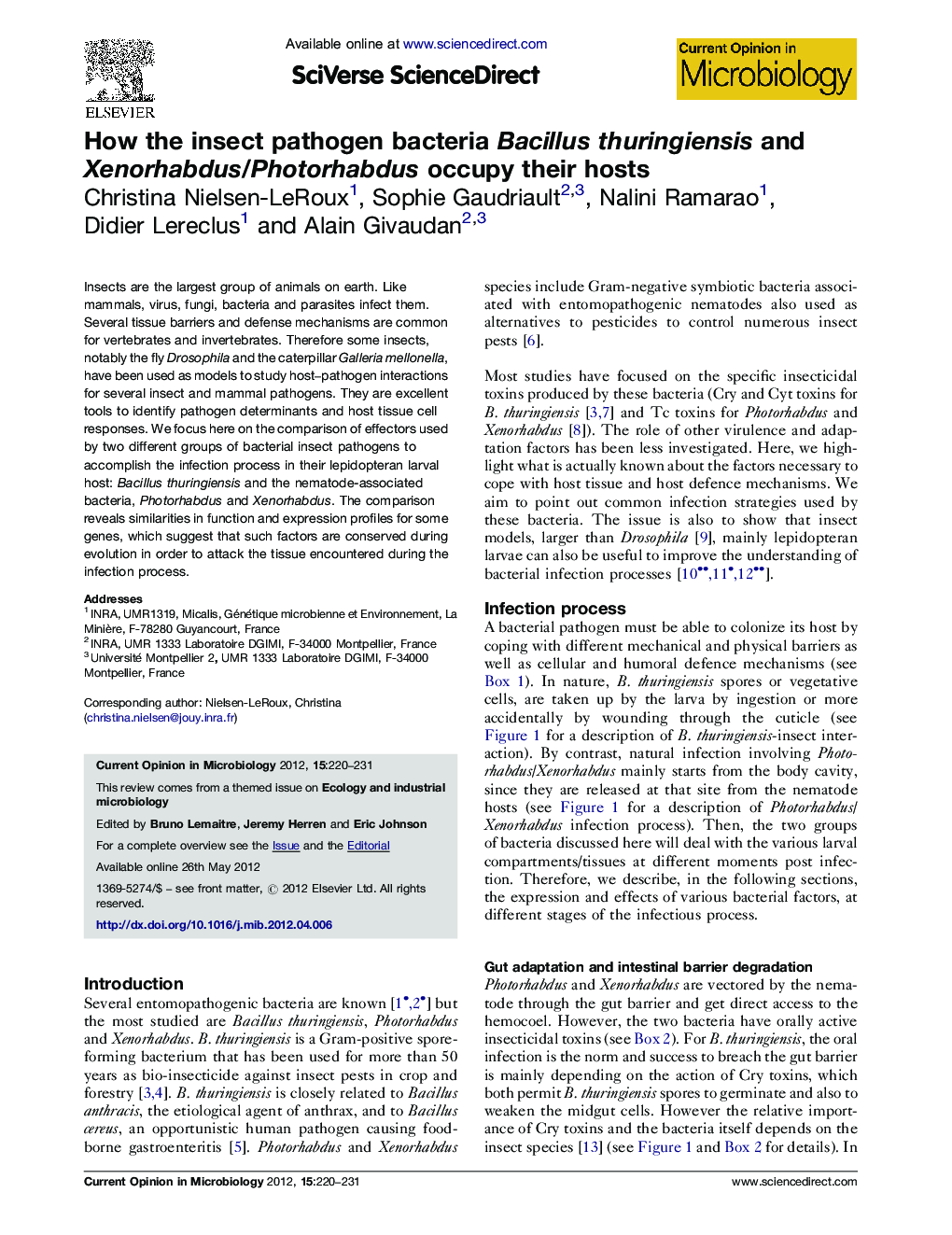| Article ID | Journal | Published Year | Pages | File Type |
|---|---|---|---|---|
| 3399250 | Current Opinion in Microbiology | 2012 | 12 Pages |
Insects are the largest group of animals on earth. Like mammals, virus, fungi, bacteria and parasites infect them. Several tissue barriers and defense mechanisms are common for vertebrates and invertebrates. Therefore some insects, notably the fly Drosophila and the caterpillar Galleria mellonella, have been used as models to study host–pathogen interactions for several insect and mammal pathogens. They are excellent tools to identify pathogen determinants and host tissue cell responses. We focus here on the comparison of effectors used by two different groups of bacterial insect pathogens to accomplish the infection process in their lepidopteran larval host: Bacillus thuringiensis and the nematode-associated bacteria, Photorhabdus and Xenorhabdus. The comparison reveals similarities in function and expression profiles for some genes, which suggest that such factors are conserved during evolution in order to attack the tissue encountered during the infection process.
► Lepidopteran larvae are useful models to study host–pathogen interactions. ► Outline of the virulence factors of B. thuringiensis, Photorhabdus and Xenorhabdus. ► Bacterial factors contribute to pathogenesis at several infection sites and stages. ► Quorum sensing and two component systems control bacterial virulence. ► Poreforming toxins and metalloproteases are important for host barrier attack.
